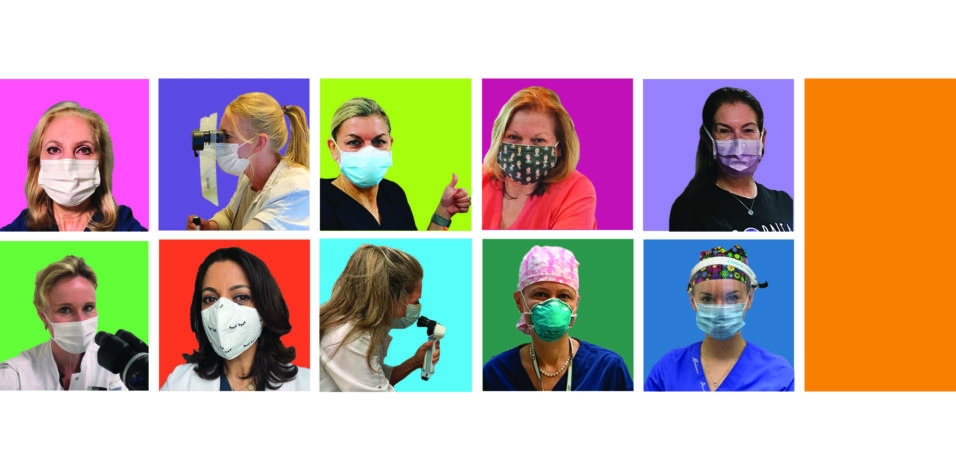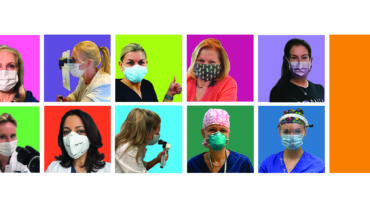You’d have to be living under a rock to be unaware of the drastic societal changes that we have endured for the past 12 to 18 months. The COVID-19 pandemic has forced us all to change the ways we live and interact with others, from observing safe social distancing and wearing masks in public to limiting nearly all civic and commercial activities.
In ophthalmology, we’ve modified how we care for patients, and we’ve created new protocols that help us conduct business in a way that prioritizes patient and staff safety. This article highlights some of the major hurdles we have overcome thus far and points to how navigating the current pandemic has spurred us to become more agile in our practice of medicine.
OVERCOMING HURDLES
If this pandemic has taught us anything, it is how to stay nimble. We’ve gotten good at pivoting from what, in most practices, were long-standing processes and procedures to a new system that requires more planning, greater attention to detail, and frequent updates. A few examples follow.
Design of the waiting room. Early in the pandemic, our immediate concern was redesigning the waiting rooms. It was common for our waiting areas to be full of patients and their caretakers. Each area had what we call niceties such as a complimentary coffee bar and light snacks or treats as well as magazines for patients to read while they waited.
At my practice, in addition to the obvious provisions of limiting seating and removing the coffee bar and magazines, we appointed a designated greeter to welcome patients and assign them to one of our (newly) numbered waiting areas. We replaced the magazines with complimentary access to wifi so that patients can use their phones freely.
At first, we asked caregivers to wait in their cars. Now, however, each patient is allowed to bring one caregiver into the clinic, and these individuals may be seated in the waiting room during the patient workup or while the patient is seen by the doctor.
Redirecting workflow. Another barrier in the first few months was redirecting patient flow through the clinic. Instead of having patients move through several rooms during their preoperative workup, we revised the setup of our examination rooms so that entire workups could be performed in one room. Patients from the numbered waiting areas are now ushered to a coinciding workup room to decrease the number of patients traveling through the areas in the clinic.
Creating a new patient flow required some creative thinking. In the long run, however, it has allowed us to become more efficient, and that's a good thing. Another positive is that our attention to detail in terms of cleaning and sanitation has also improved. Surgeons and technicians each have their own plastic slit-lamp shield with their initials on it. We carry them from room to room so that we always use our own.
Workday attire. In the peak of the pandemic, all of our staff wore scrubs at work. They would change from their regular clothes at the start of the workday and deposit their used scrubs in the locker room laundry bin at the end of the workday. Once we learned that the virus does not spread easily from surfaces, we updated our dress policy to return to dressing in professional attire. Patients, I believe, appreciate the look of normalcy.
Staff vaccinations. Once all of the MDs and ODs in the practice were vaccinated, we held informational sessions with all employees (approximately 250 across eight locations) to provide facts and dispel myths about the virus and the available vaccines. The MDs and ODs also shared why they chose to get vaccinated and assured employees that they would have the time away from work required to schedule their own vaccinations.
A large percentage of our employees, including everyone in our surgery center, has been vaccinated. We do, however, have some holdouts. We continue to urge them to get vaccinated, and the doctors in the practice follow up with their teams regularly to help ease fears and provide support to those who remain undecided.
We also send out a weekly COVID-19 newsletter to keep the staff up-to-date on any positive cases at our locations, and someone at each center is in charge of contact tracing whenever we receive word that an employee has tested positive for COVID-19.
CONCLUSION
We all have more agility in us than we think. Using the COVID-19 pandemic as an opportunity to promote practice growth and improve efficiencies has been a challenging but rewarding experience. Staying nimble in this tumultuous time will help us to increase the longevity of our practice.


